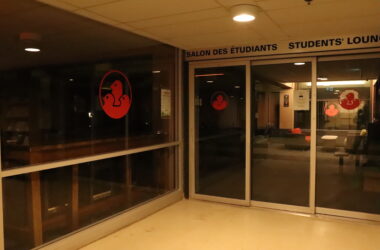Last Wednesday, March 14, McGill’s Aboriginal Law Students’ Association screened Qimmit: A Clash of Two Truths as part of Inuit Awareness Week, an initiative of the Aboriginal Sustainability Project. The screening was followed by a question and answer period with Ole Gjerstad, co-director of the film, and Imaapik “Jacob” Partridge, an Inuit Elder who has worked with the Makivik Corporation, an organization dedicated to promoting Inuit culture.
The film was about an alleged policy enacted by the Federal government which entailed the systematic killing of Inuit sled dogs-then essential to the Inuit way of life-as a means to push Inuit communities out of their land and force them into Canadian society. The policy, allegedly carried out by the Royal Canadian Mounted Police from the 1950s to the 1970s, has not been addressed by the Canadian government thus far. In 2006, the Inuit community started their own investigation into the events.
“In 2006, the [Qikiqtani] truth commission was set up in Nunavut, and soon after, the Makivik Corporation negotiated with the Quebec government to inquire into the matter,” Gjerstad said.
The film covers both Inuit and Royal Canadian Mounted Police (RCMP) perspectives on whether or not such a policy ever existed. It features many testimonies of Inuit who witnessed officers ordering or actively taking part in the killing of Inuit sled dogs, as well as the opinions of several RCMP officers from different areas, all of whom denied ever hearing of such events.
“We began making the film in 2007,” Gjerstad said. “We kept at it in Nunavut and in Nunavik for about three years. … We had about 300 testimonies in Nunavut and close to the same amount in Nunavik.”
At the time of the killings, the dogs were essential to the Inuit way of life, as dog sledding was the principal means by which animals were chased and hunted for food. Between the 1950s and the 1970s, however, the population of dogs decreased dramatically. Many Inuit claim to have personally witnessed the killing of dogs by government officers.
“Those that were more political than myself realized that it was the government’s idea to bring all the Inuit into one community,” Partridge recounted.
The film screening was part of a week-long series of events coordinated by the Aboriginal Sustainability Project in order to raise awareness of Inuit society and culture.
“This week’s focus is basically the realities, the good and the bad, of Inuit people in the North, in a world where everything is changing quickly,” Allan Vicaire, co-ordinator of the Aboriginal Sustainability Project, said. “The [intention] is to create an awareness of Inuit culture. One of the challenges that Inuit and even Métis face is that their voices are often not heard.”
Each night of the week, a different event was held, aiming to educate attendees about Inuit culture from different angles. This event, focusing on the issue of Inuit dog slaughter, showed a glimpse of Inuit society as it relates to Canadian government and policy. Other events touched on other aspects of Inuit culture, and included a discussion on challenges in Inuit health and a speaker who spoke on studying in Montreal as an Inuit student.
“With all these changes going on in the world, we [can get] all these Inuit perspectives and learn about how they came to adapt in terms of education, health, and social services,” Vicaire said. “The whole week catches on a lot of those topics, and even more. At the end of the week, we have the celebration of culture. It’s about bringing those issues to the forefront.”








